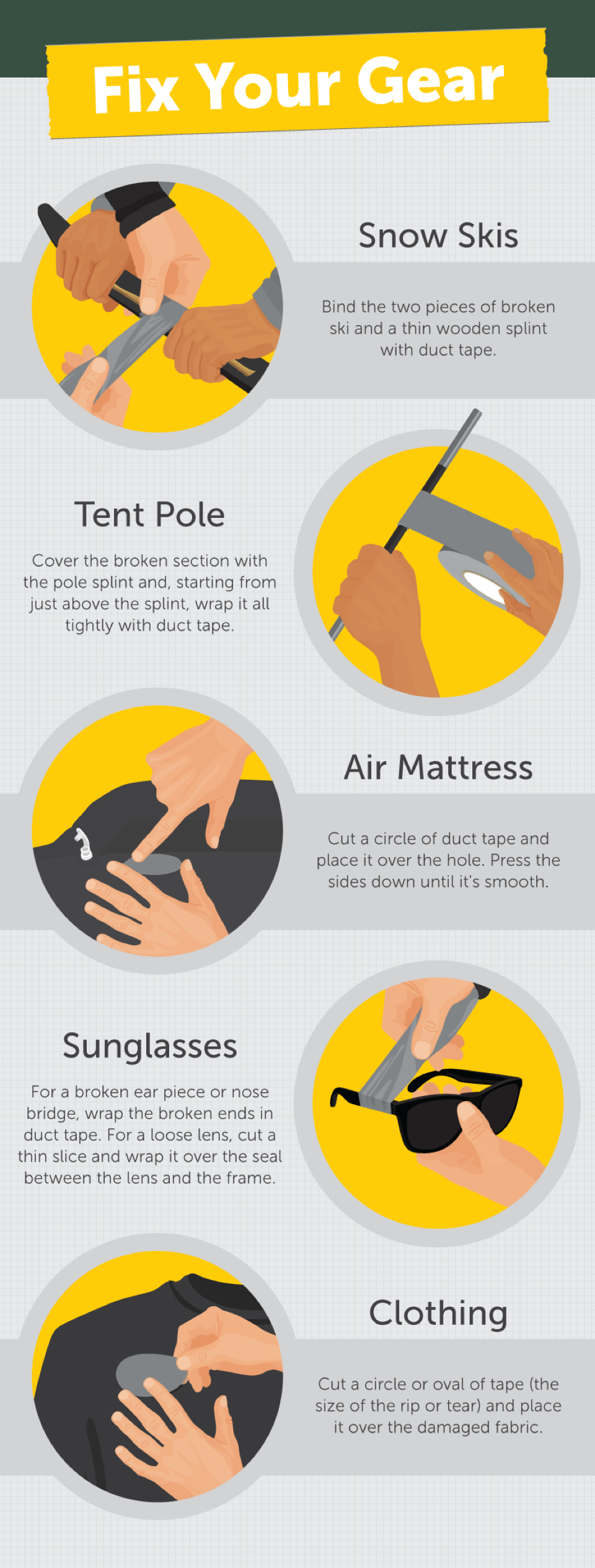No matter what the seasons is, a trip in the backcountry requires a few essential items: food, shelter, and duct tape. For some people, the list could be whittled down to simply duct tape. Its adhesive capabilities and waterproof exterior make it one of the most dextrous tools you can carry; in a pinch, it can be used to build a shelter and create snares to catch food. Try turning a freeze-dried meal into a tent or vice versa! If you aren’t sold on the wonders of duct tape, here are fifteen reasons to bring a roll on your next wilderness expedition (and a few tips for how to keep your stash of tape organized and safe from the elements).

On a backcountry trip, you won’t be happy carting around an entire roll of duct tape, replete with the inner cardboard roll: it’s heavy, it’s bulky, the cardboard will disintegrate when it gets wet, and the roll takes up an inordinate amount of space. Here are a few techniques for efficiently packing duct tape to bring on your next trip.
A little time consuming, but with a nice, compact final product. Simply start unrolling a little of the tape. When you have about 4 inches unspooled, fold the tape back on itself so you have two sides that are not sticky. Keep folding the tape on top of itself until you have the amount you need for your trip. Pack the duct tape in a ziplock bag to keep it from sticking to other things in your pack.
This is a common trick used by people who hike with trekking poles. Start by holding the trekking pole sideways so that it’s easier to work with the tape. Then wrap the duct tape around the trekking pole until you have the desired amount. If you don’t like a thick roll of tape, consider wrapping half on one pole and half on the other.
For little fixes, it’s nice to have a thin strip of duct tape, rather than the bulky width of the tape on the roll. To create a half spool, find something round, like a tent pole splint or a pencil. Using a sharp blade, slice the duct tape on the roll so that you have either two or three equal widths of tape; if you score all the way around the roll, it’s a lot easier to pull off. Start rolling one strip around the pencil until you have enough.
Duct tape now comes in a variety of colors and patterns, all of which have the same strength and stickiness of the original silver tape. If you’re hunting, pick up some camo-colored tape (or hunter orange for making yourself visible). If you’re wrapping tape around trekking poles, having two different colors of tape can help differentiate the two poles. If you anticipate using the tape to mend clothing, tents, or other wearable items, black, blue, or dark green make more discreet patches than the bright silver. Neon shades work especially well for marking trails because they show up so much better than silver or dark colors.

The original purpose of duct tape was to make repairs. This is one of its best applications in the wilderness, where supplies are limited and multi-purpose items are priceless.
This Retro WON first appeared June 23, 2017.
The Women's Outdoor News, aka The WON, features news, reviews and stories about women who are shooting, hunting, fishing and actively engaging in outdoor adventure. This publication is for women, by women. View all posts by The WON